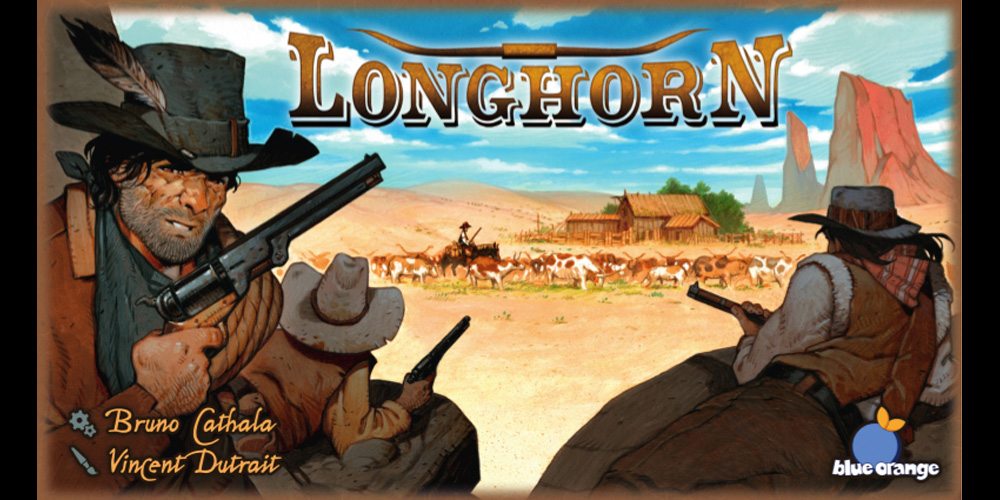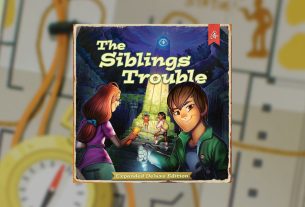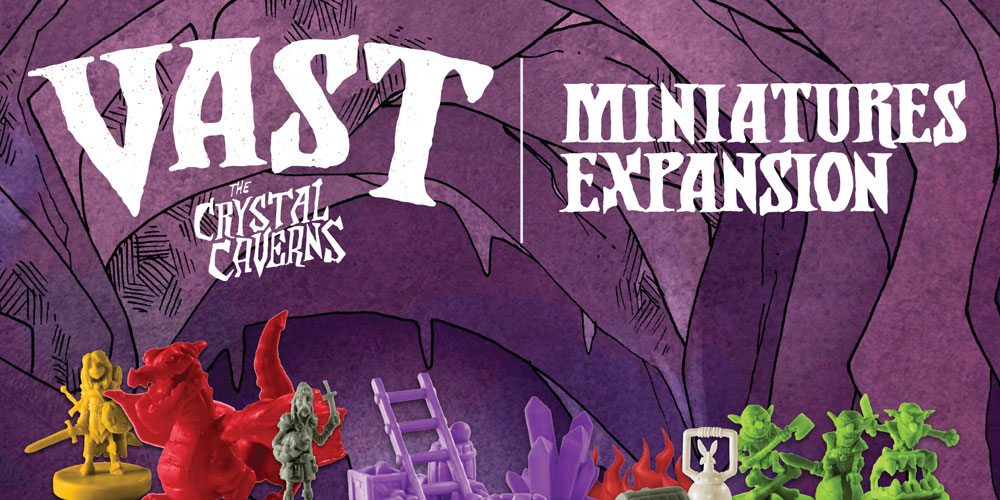Overview: If you’ve ever wanted to be a comic book superhero, Sentinels of the Multiverse is a fast-growing playground for you. This cooperative card game puts you in the shoes of a team of superheroes, battling dastardly villains in a hostile environment. Sentinels blasted onto the scene just last year, but has already had two expansions, a major update, and a third (and fourth) expansion just wrapping up on Kickstarter now. My review is long overdue, but in case you haven’t already tried it, here’s an introduction to the Multiverse.
Players: 2 to 5
Ages: 8 and up
Playing Time: 1 hour
Retail: $39.95 base game, $19.95 per expansion
Rating: A hit — but is there reduced damage? The game can be a lot of fun, but can also turn into a slog. Check out the rest of the review for a more nuanced look.
Who Will Like It? If you like co-op games and comic books, you’ll love the details in Sentinels. It’s obvious that the guys from Greater Than Games love comics — to the extent that now they’re creating comics based on the characters in this game. Just check out some of the updates on their Kickstarter campaign to see the way they’ve put together backstories for all of the heroes and villains, or visit their website for more about all of the characters (and settings) of the Multiverse.
Theme:
Sentinels was created by a couple of guys who loved comic books and board games and didn’t understand why there weren’t already any board games where you got to be superheroes battling villains. Of course, since then there have been a few games in this vein — including some upcoming Marvel and DC licensed games — but I haven’t seen any that have such a fleshed-out storyline behind the characters. A lot of the character types are familiar: Baron Blade has his roots in Lex Luthor (among others) and Legacy is certainly the Superman type. You’ve got somebody who is super-fast, an Egyptian god, a guy in a giant armored suit.
It’s all designed to feel familiar to comic book readers, but at the same time it’s an original creation, and it’s clear that fans have been drawn into the story. Even though I haven’t gotten to play through all of the card sets yet, I was intrigued enough by their Shattered Timelines stories to back their latest Kickstarter project.
The character cards are designed to look like comic book covers, and all of the cards are done with comic-book layouts and fonts. Also, all of the cards have quotes at the bottom from (non-existent) comic books, referencing issue numbers. If you like to get into character when you play a game, Sentinels will definitely let you do that.
Components:
The base game (2nd Edition) comes with 578 cards, plus divider cards, and 162 tokens (for tracking hit points and status effects). There are 10 heroes, 4 villains, and 4 environments. The box is also large enough to hold all the cards from at least the first two expansions — although I’ve had trouble figuring out where to put the oversized character cards that I got as Kickstarter bonuses.
The cards are nice and have a good feel to them, though the edges of mine are showing some wear. (I don’t usually sleeve my cards.) The tokens for tracking hit points and status effects are sturdy cardboard that punch out cleanly, and the divider cards are a nice (and necessary) touch. The first edition came in a small flat cardboard box with no box divider whatsoever, which meant that all of your 18 different decks would turn into one large mess, and the tokens are also new in the second edition.
The Rook City expansion is the darker, grittier side of the Multiverse, and adds 2 heroes, 4 villains, and 2 environments. Infernal Relics, co-designed by Richard Launius, also adds 2 heroes, 4 villains, and 2 environments. Both expansions add some new mechanics and rules.
Each of the rulebooks includes bios of the villains and heroes in case you want to know the backstory — and you do. That’s part of the fun, that the characters are deeper than just a name and an image, but that they have their own origin stories.
I’m on the fence with the artwork: I think Adam Rebottaro’s comic book illustrations have been improving since the original game, but it’s still not up to the standards I’d expect from a great comic book. It works for putting you into the comic book setting and adds that flavor to the game, but it isn’t the Marvel Method. I’ve also spotted a few misspellings and punctuation errors on the cards — but I suppose that just adds to the comic book authenticity…
A game in progress: Unity, Ra, and Mr. Fixer take on (and eventually lose to) The Apostate. Photo: Jonathan H. Liu
Gameplay:
Each player chooses a hero and takes the associated character card and deck of hero cards. You also choose a villain and an environment (where the battle takes place). Villain cards are double-sided, with instructions on which side starts face-up and whether the villain starts with any cards in play. The Environment deck is shuffled and placed to one side. You’ll need a bit of table space: room for all of the various decks of cards, plus discard piles and spaces for all of the cards that are in play.
The game is played in these phases: Villain Turn, Hero Turns, Environment Turn.
When the villain acts, first you see if any existing cards do anything “at the start of the villain turn” and follow those instructions. Then you draw the top card from the villain deck and play it, following the directions on the card. Finally, you follow any instructions that say “at the end of the villain turn.”
The heroes take their turns in clockwise order in a similar fashion but with two additional steps: start of the turn, play a card, use a power, draw a hero card, and end of the turn. Heroes may choose not to play a card or use a power — if they do neither, they can then draw two cards instead. Each hero has a power listed on their character card which can be used, and many of the cards have additional powers once they’re in play.
After all of the heroes have acted, then the environment has its own turn. Again, the sequence is: start of the turn, play a card, end of the turn.
Of course, the types of cards are where it gets interesting. Any card with a hit point number in the corner is a “target” and can be damaged, whether it’s a villain card, hero card, or environment card. Your goal, of course, is to reduce the villain’s hit points to zero, but often you’re forced to go through their minions first, or deal with the effects of their powers before you can get to them. The environment can be harmful to you or the villain, or sometimes both. There are different types of damage on the cards: melee, cold, fire, psychic, toxic, and so on. Most of the time it doesn’t matter — damage is damage — but there are various cards that interact with each other, reducing one type of damage or reacting to another.
When a hero runs out of hit points, they aren’t out of the game entirely: they’re considered “incapacitated” but still have a few abilities. You discard all your cards, set your deck aside, and flip over your character card. There are some abilities listed on the back of the card, and for the rest of the game you get to use one of those abilities each turn to bolster your surviving teammates.
The game ends when either the villain is vanquished or all the heroes have been incapacitated.
Conclusion:
When I first met the guys from Greater Than Games (Christopher Badell, Adam Rebottaro, and Paul Bender) at PAX Prime last year, I was impressed by the amount of work they’d put into the game, and was really excited to try it out. And then I got totally swamped with other projects and a lot of my PAX Prime board games (including Sentinels) went unplayed for much too long. But I kept following them as they launched Kickstarter projects and released more and more content, and I’ve been astounded by the pace they’ve been setting. By the fall of 2013, they’ll have released a game and four expansions (the last one a stand-alone expansion) in just over two years. I’ve been backing their projects and a quick look at their numbers shows that they’ve got quite a following. They’re incredibly enthusiastic and they love rewarding their fans, and it’s definitely paying off.
The game itself can be incredibly hard or very easy, depending on the number of players and particular combination of heroes, villains, and environment. The first edition didn’t seem as balanced — the villain and environment each got one turn per round regardless of whether there were two or five heroes in the fight, which mean that it got easier the more players you had. Later versions fixed that, with certain card effects dependent on the number of heroes. I’ve only played a handful of times so far, and I’ve only won once so far — it can be a brutal game depending on the villain you’re up against, particularly in a two-player game when you don’t have an array of powers to complement each other.
The incapacitated heroes are there to prevent players from being totally eliminated, but unfortunately if the game lasts a while after you’ve been knocked out, it’s not a great experience, playing one ability per turn, unless you love the game so much that you’re cheering on your teammates from the sidelines. It can be that sort of game, but I think it depends on the players. It works best for people who want to get into character, not for those who are just interested in the mechanics alone.
However, I do really like the variety of characters, and the fact that the hero cards aren’t simply variants of each other. The cards really do give each character a different feel when you’re playing them. For instance, Tachyon (the quickest woman on Earth) can burn through her deck quickly, drawing and playing a lot of extra cards. Unity, a technopath, is able to build mechanical golems which deal ongoing damage (and protect her). Absolute Zero’s power is to deal damage to himself, but then various modules allow him to redirect that damage to other targets. The strategies you use for one character won’t necessarily carry over to another.
Of course, because of that, this is a game that requires multiple plays to really master, and I’m not there yet myself. I’m not familiar enough with all of the powers (heroes and villains) to know which heroes to send up against which villains, but I’m planning to stick around long enough to find out.
Today is the last day of the Kickstarter campaign for Shattered Realms, and there are various levels available if you want to get the base game or older expansions instead, plus a slew of add-on options like playmats, oversized villain cards, and other goodies. The guys at Greater Than Games smashed through all of their stretch goals, which means that everyone who pledges $20 or more gets a pile of extras. If you love comics and board games, go have a look and check it out!
Wired: Cooperative comic-book card game with lots of room to expand; awesome comic-book feel.
Tired: Game isn’t always balanced; incapacitated heroes stick around but don’t have much to do.
Disclosure: I received a review copy of the base game.










